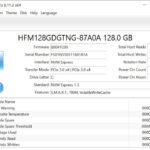Do you know how to interpret the cryptic messages your Bell truck displays? Understanding these Bell Truck Codes is crucial for diagnosing and resolving issues, ensuring the smooth operation of your vehicle. While the Highway Code guides safe road practices, bell truck codes provide insights into the inner workings of your truck. This article delves into the importance of these codes and how they can save you time and money on repairs.
Decoding the Language of Your Bell Truck
Bell trucks, known for their robust performance, utilize a sophisticated system of diagnostic trouble codes (DTCs), often referred to as “bell truck codes”. These codes, displayed as alphanumeric sequences on the dashboard or through specialized diagnostic tools, act as a language between your truck and the technician. Each code corresponds to a specific malfunction within the vehicle’s systems, ranging from minor sensor glitches to significant engine problems.
For instance, a code like “SPN 520211″ might indicate an issue with the aftertreatment diesel particulate filter, while ” FMI 9″ suggests a problem with the vehicle speed sensor. Deciphering these codes allows for targeted troubleshooting, eliminating the guesswork often associated with vehicle repairs.
The Importance of Prompt Diagnosis
Ignoring warning lights or unfamiliar bell truck codes can lead to more extensive and costly repairs down the line. A seemingly minor issue, if left unaddressed, could escalate into a major breakdown, potentially leaving you stranded or incurring significant repair bills. Prompt diagnosis through understanding these codes enables timely intervention, preventing further damage and ensuring the longevity of your Bell truck.
Early detection of problems through bell truck codes can also enhance safety. Issues with braking systems, engine performance, or emissions control can compromise the safe operation of the vehicle. Addressing these problems promptly, guided by the diagnostic codes, ensures the truck remains in optimal condition, minimizing the risk of accidents.
Accessing and Interpreting Bell Truck Codes
Accessing bell truck codes can be done through various methods. Some trucks display codes directly on the dashboard, while others require the use of a diagnostic scanner. These scanners, available at auto parts stores or used by professional mechanics, connect to the truck’s onboard diagnostic system (OBD) port and retrieve the stored codes.
Once retrieved, interpreting these codes accurately requires access to the appropriate service manual or online resources specifically for Bell trucks. These resources provide detailed descriptions of each code, along with potential causes and suggested troubleshooting steps. While some codes may indicate simple fixes, others might require the expertise of a qualified Bell truck technician.
Bell Truck Codes: Your Key to Efficient Maintenance
Bell truck codes are invaluable tools for preventative maintenance. By regularly monitoring these codes, you can identify potential problems before they become major issues. This proactive approach allows for timely repairs and component replacements, extending the lifespan of your truck and minimizing downtime.
Just as adhering to the Highway Code ensures safe driving practices, understanding bell truck codes empowers you to maintain your vehicle effectively. By learning to decipher these codes, you become an active participant in the health and longevity of your Bell truck, ultimately saving time and money on repairs.

